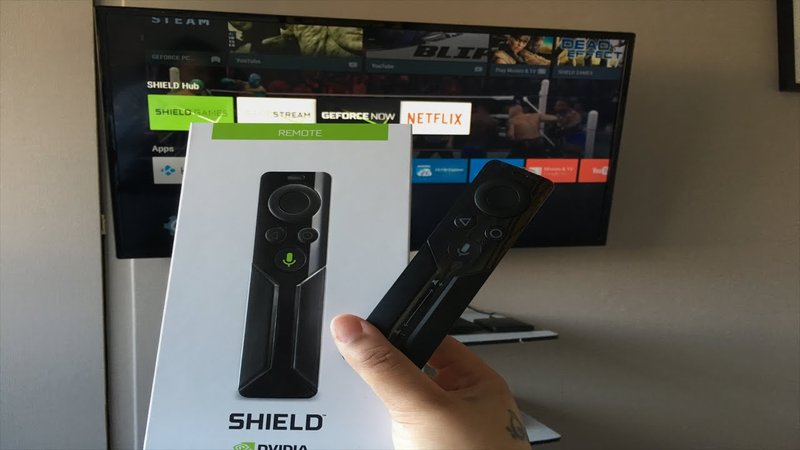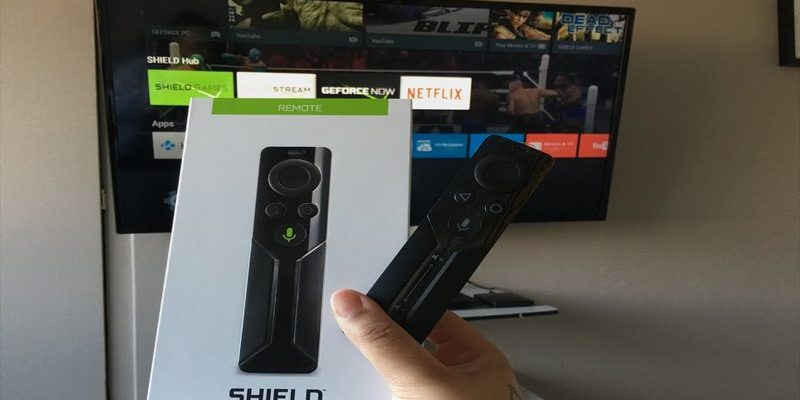
Maybe your remote suddenly stopped controlling volume, or you’re swapping batteries and nothing’s happening. Or, you just got a second-hand Shield remote and need to sync it. Whatever your reason, getting into setup mode is step one—and honestly, it’s not as wild as it sounds. Imagine setup mode as the “woo-hoo, I’m ready for new instructions” state your remote needs to be in before it can pair, code, or reset itself. Let me break it down so you’re not left pressing random buttons and hoping for the best.
What is Setup Mode on Nvidia Shield Remotes?
Let’s start with what this mythical “setup mode” actually means. Nvidia Shield remotes—there are a couple of versions, by the way, but they mostly work the same way—need a special state where they’re open to new connections, updates, or troubleshooting steps. Think of it like putting your remote into “listening mode” so it can hear the Shield box whisper, “Pair with me!”
When you enter setup mode, the remote temporarily stops doing its regular job. Instead, it waits for pairing codes, sync signals, or reset instructions. This is super handy if you’re setting up a new device or if your remote’s gone rogue and needs a fresh slate. Not getting into setup mode is kind of like trying to talk to someone with headphones on—they’re just not going to respond.
Different Shield remotes might have unique ways to trigger setup mode, but for most people with the Nvidia Shield TV remote (the triangle-shaped one from 2019 onward or even the older flat “stick” version), the process is pretty similar. Just know: if you’ve got a universal remote or an off-brand model, things might look a little different, so always check your specific manual if the usual tricks don’t work.
How To Enter Setup Mode: Step-by-Step
Here’s the million-dollar question—how exactly do you get into setup mode on your Nvidia Shield remote? Spoiler: there’s a secret handshake, but it’s really just a button combo.
First, make sure you’ve got fresh batteries in your remote. Seriously, I can’t count the number of times setup mode fails simply because the batteries are limping along. If your remote’s battery is low, it might not respond. Grab a couple of AAAs or whatever your model uses.
Now, for the main move:
- Hold down the Home button and the Back button at the same time. (On some models, it may be OK and Back.)
- Keep holding them for about five seconds, or until you see the LED on the remote start to flash. That’s the sign that you’ve nailed it—the remote is now in setup mode and ready to pair, reset, or listen for codes.
If your remote has no light, try pointing it at the Shield box and see if any on-screen messages pop up. Some remotes don’t have a visible LED, so look for prompts on your TV instead. If you feel a little silly holding buttons for ages, you’re not alone; most of us have done this more than once!
Pairing Your Remote in Setup Mode
Okay, so you’re in setup mode—what now? The most common reason folks need setup mode is to pair or re-sync the remote with their Nvidia Shield device. When you first get your Shield or after replacing batteries, you might need to do this.
With the remote in setup mode (LED flashing or Shield box showing a pairing prompt), use your Shield TV. Navigate, if you can, to Settings > Remotes & Accessories > Add Accessory. The Shield TV will scan for remotes in setup mode.
Select your remote on the list that pops up and confirm pairing. Usually, you’ll see a message saying, “Pairing successful!” If the remote refuses to show up, double-check that you’re still in setup mode. The remote times out after a minute or two, so you might need to hold those buttons down again.
Pro tip: If your remote just won’t pair, try restarting the Shield TV box and repeating the steps. Sometimes, tech just needs a fresh start—like us on a rough Monday morning.
Resetting and Troubleshooting Your Nvidia Shield Remote
Sometimes, things go sideways—maybe your buttons stick, or the remote won’t sync even in setup mode. Here’s the thing: remotes can be stubborn. Like a cat that sits on your keyboard, sometimes you just have to reset everything and hope for cooperation.
To reset your Nvidia Shield remote, enter setup mode as before. While you’re in setup, hold down the Home button for about 10 seconds. Some models also let you use a little reset pinhole on the back—poke it gently with a paperclip. This wipes out any weird pairing memory or ghost codes.
After resetting, go through the pairing process again. If it still won’t respond, check the batteries one more time (I know, but seriously). And make sure there’s nothing blocking the remote’s signal or interfering—Bluetooth devices nearby can sometimes trip things up.
If you’re still stuck, you might be dealing with a firmware glitch. Try plugging your Shield TV into Ethernet instead of Wi-Fi and run a system update. It’s rare, but sometimes the remote itself needs a firmware upgrade. Nvidia releases these through the Shield box itself—no need for a separate download.
What To Do When Setup Mode Doesn’t Work
You’ve pressed and held every button combo, swapped batteries, even tried the paperclip trick—and still, setup mode isn’t happening. Frustrating, right? Here’s a checklist of next steps in plain language.
- Are your batteries fresh? Don’t trust the ones from the junk drawer—use a brand-new pack, just in case.
- Are you pressing the right buttons? Double-check your model (triangle vs. stick) and look up the exact combo. Some older remotes flip the button order.
- Is there a physical issue? If the buttons are sticky or the remote took a dive into the couch coffee, it might be time for a replacement or a gentle cleaning.
- Try the Nvidia Shield TV app. Download the official app on your phone just to control the box for now. It won’t enter setup mode for the physical remote, but at least you can keep watching and troubleshooting without total frustration.
If nothing works, reach out to Nvidia support (they’re honestly pretty responsive) or consider grabbing a replacement remote. You can use some universal remotes, but keep in mind, functionality might be limited—volume and voice search especially.
Universal Remotes vs. Official Nvidia Shield Remotes
You might be wondering, “Can I just grab a universal remote from the bottom of my tech drawer?” The answer is: kind of. Some universal remotes can pair with Nvidia Shield, but setup mode and syncing are hit or miss. Most universal remotes use IR (infrared), while Nvidia Shield remotes use Bluetooth.
With an official Nvidia Shield remote, entering setup mode and syncing is built-in and straightforward. Universal remotes might need you to enter codes—a little flashback to the early 2000s and programming the VCR. The downside? You might lose out on advanced features like voice search, custom button mapping, and that satisfyingly smooth scrolling.
If you’re just after basic playback controls, a universal remote can fill the gap. But for the full Shield experience—voice commands, app launching, volume—all the bells and whistles, the Nvidia Shield remote is your best friend.
Battery Life & Maintenance Tips for Your Remote
I know, talking about batteries sounds boring, but hear me out: remote problems often start with power. If your Nvidia Shield remote keeps dropping pairing or refuses to enter setup mode, a dying battery is the likely culprit.
Use high-quality batteries, and try to avoid mixing old and new ones. If your remote is rechargeable (some of the newer versions are), make a habit of plugging it in overnight every couple weeks. If you leave batteries in for months unused, remove them to prevent leaks—that’s an ugly surprise nobody deserves.
Keep your remote clean, too. Dust, pet hair, and the occasional spilled soda can all mess with the buttons. Gently clean around the buttons with a dry toothbrush or a slightly damp cloth—don’t go wild with water! Treat your remote like your phone: keep it somewhere safe, away from spills and sudden gravity checks.
Real-World Troubles and Tiny Victories
Let me tell you, I’ve spent more time than I care to admit wrangling with streaming remotes. There’s something oddly satisfying about finally cracking the setup mode code and seeing that “Connected!” message pop onto your screen. It feels a bit like winning a round of tech bingo.
But here’s the thing: once you know the trick, getting into setup mode on your Nvidia Shield streaming device remote is surprisingly easy. Most of the headaches come from low batteries, missed button combos, or just not knowing the process. Keep your patience (and maybe a snack) handy, and follow the steps: hold the right buttons, watch for the LED, and sync through your Shield’s settings.
If you run into weird issues, don’t beat yourself up. These gadgets were designed to be powerful, not always intuitive. Try the troubleshooting tips, experiment with universal remotes if you need a backup, and don’t be afraid to poke around the Shield TV app on your phone. You’re not the only one who’s been stumped by setup mode, I promise.
When it all works, kick back and enjoy your shows—setup victory in hand! And if you’ve got any oddball tips or remote success stories, share them with fellow Shield users online. Sometimes, the best solutions come from the trenches.
